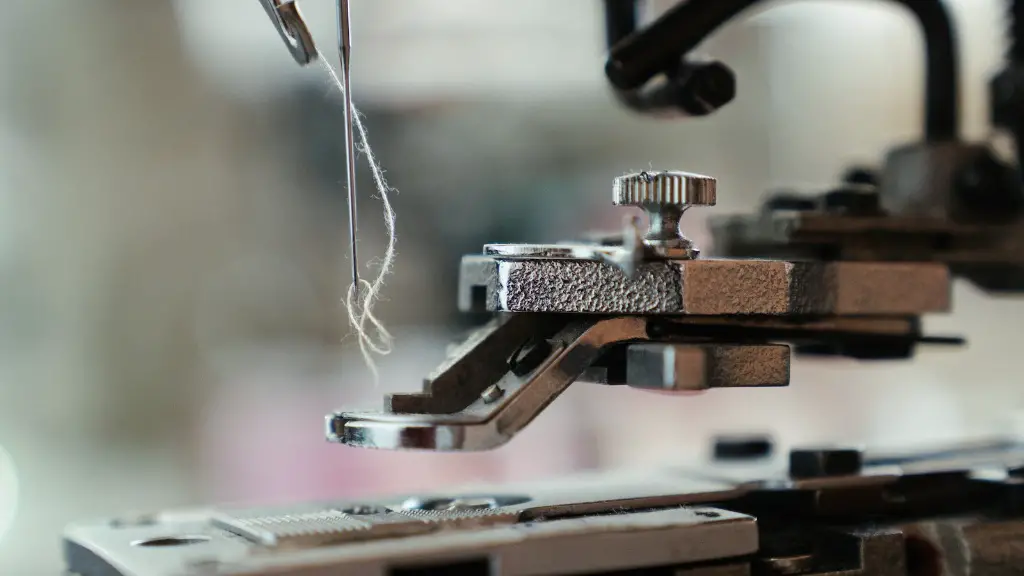Sewing machines have been around for hundreds of years, but there’s nothing like a manual machine for the serious seamstress. A manual machine requires more patience and attention to detail, but it can produce high-quality work that lasts for years. Follow these steps, and you’ll soon be a manual sewing master.
Gather Necessary Supplies
The first step in setting up a manual sewing machine is to gather the proper supplies. This includes a spool of thread, a seam ripper, scissors, a seam gauge, sewing pins, a measuring tape, and fabric-marking pencils. It’s also a good idea to have a few extra bobbins, a lint brush, and some fabric shears. Depending on the type of machine you have, you may also need some additional supplies, such as a walking foot or a special presser foot.
Read the Instruction Manual
In order to correctly set up a manual sewing machine, you’ll first need to read the instruction manual. This important document can help you understand how to thread the machine and adjust the tension. It will also give you details about the features of your particular machine and how to use them. Take time to carefully read through the instruction manual and familiarize yourself with all of its contents to ensure that you are able to use the machine properly.
Thread the Bobbin and Bobbin Case
After you’ve read the instruction manual, you’re ready to begin threading the machine. Start by threading the bobbin, which is the cylinder that holds the thread. Then place the bobbin into the bobbin case, which helps keep the thread in place. Make sure that the thread is wound tightly and securely, with no knots or twists.
Thread the Needle
Next, thread the needle. First, press the needle thread lever to raise the needle. Then, carefully thread the needle with the thread matching the spool color perfectly. Wind the thread around the tension discs and press the lever again to lower the needle. Take the excess thread and pull it through the small loop at the back of the machine.
Check the Tension
The correct tension setting on a manual sewing machine is vitally important. If the tension is too tight, the stitching won’t be uniform and the fabric may be damaged. If the tension is too loose, the stitching may be loose and the fabric may not stay together. Refer to your instruction manual to set the tension properly for the type of fabric you are working with.
Test the Machine
Once you have the bobbin and needle thread set up and the tension set correctly, it’s time to test your machine. Use a scrap of fabric to test the stitching and ensure that the tension is set correctly. Make sure that you can see the top and bottom of the stitching on the back of the fabric and the front of the fabric. If you’re satisfied with the stitches, you’re ready to sew.
Maintain Proper Maintenance
Lastly, it’s important to keep up with your manual sewing machine’s maintenance. Use a lint brush to dislodge and remove any dust, dirt, or lint that accumulates. It’s also important to oil the metal parts of your machine periodically. Just a few drops of machine oil will keep the metal parts lubricated and protect them from rust and corrosion.
Know Your Machine
When it comes to sewing with a manual sewing machine, knowledge is power. Take the time to learn your machine inside and out. Familiarity with your machine and confidence in your own abilities will help you to produce the best possible results.
Different Types of Sewing Machines
You may find that manual sewing machines come in several different types, depending on the manufacturer. A standard sewing machine typically has a rotary or reciprocating mechanism and is suitable for most sewing applications. An embroidery machine features a zigzag stitching pattern and is designed specifically for needlework. Lastly, a serger is able to perform a chain stitch, useful for finishing edges and seams.
Accessories and Notions
An array of accessories and notions are available to use with a manual sewing machine. Accessories like presser feet, needles, and threads can help you create the perfect stitch. Notions like seam rippers, marking tools, and measuring tapes can help you achieve precise measurements and accurate adjustments.
Working with Multiple Fabrics
Learning how to sew with multiple fabrics is an important skill if you plan to use your manual sewing machine for a variety of projects. Start by selecting fabrics that are similar in weight, texture, and handle. When sewing multiple fabrics together, place one fabric face up and the other fabric face down, and make sure all the edges are aligned.
Transferring Patterns
If you’re sewing with patterned fabrics or creating a project from a paper pattern, it’s important to transfer the pattern to the fabric correctly. The easiest way to do this is to use the transfer paper. Trace the paper pattern onto the transfer paper and then trace the pattern onto the wrong side of the fabric.
Practicing Your Skills
As with any skill, practice is necessary to become a master. Start by familiarizing yourself with the machine, then practice simple straight stitches and zigzag stitches. Once you’ve gained some confidence, move on to more complicated projects.



